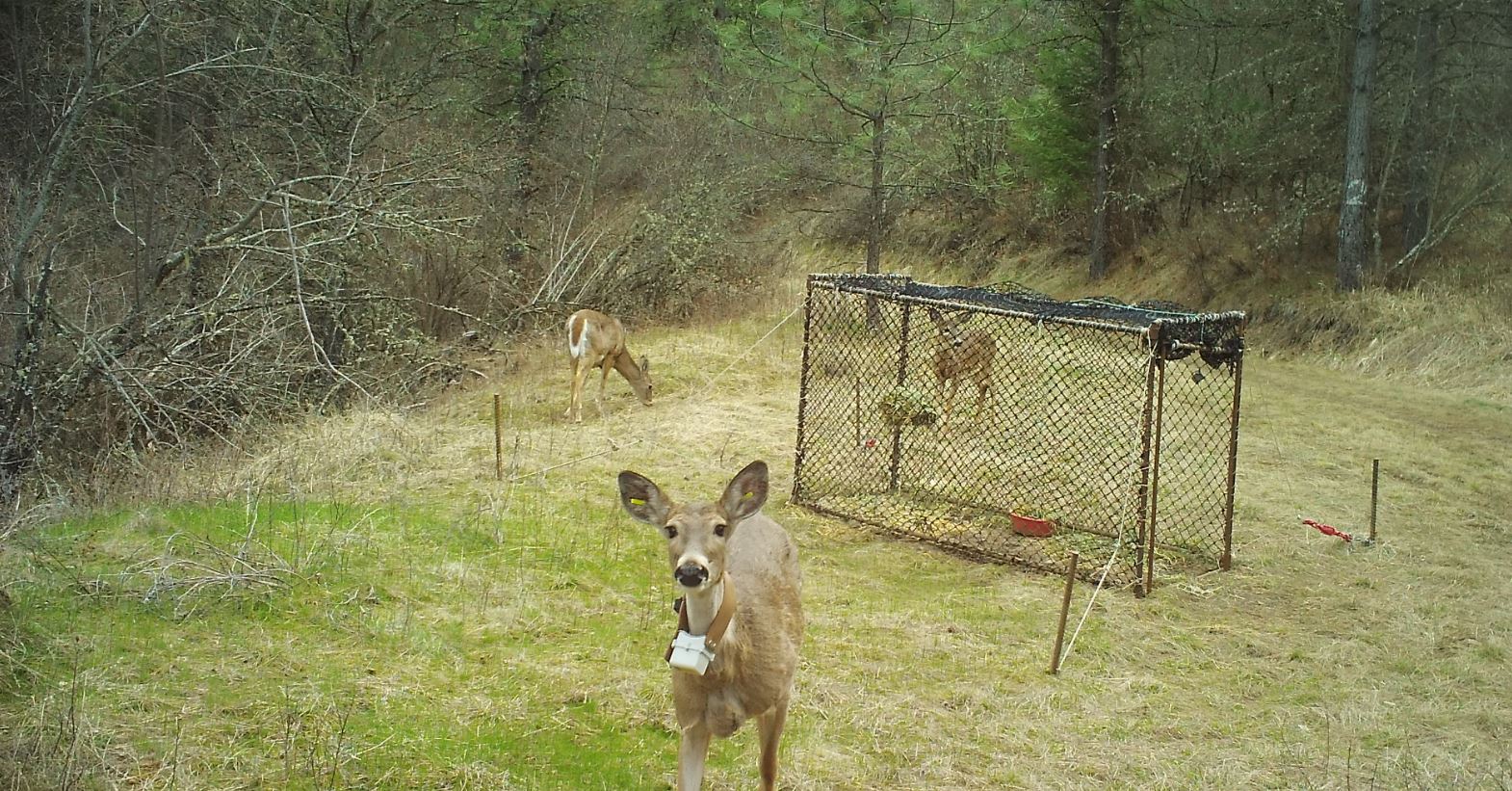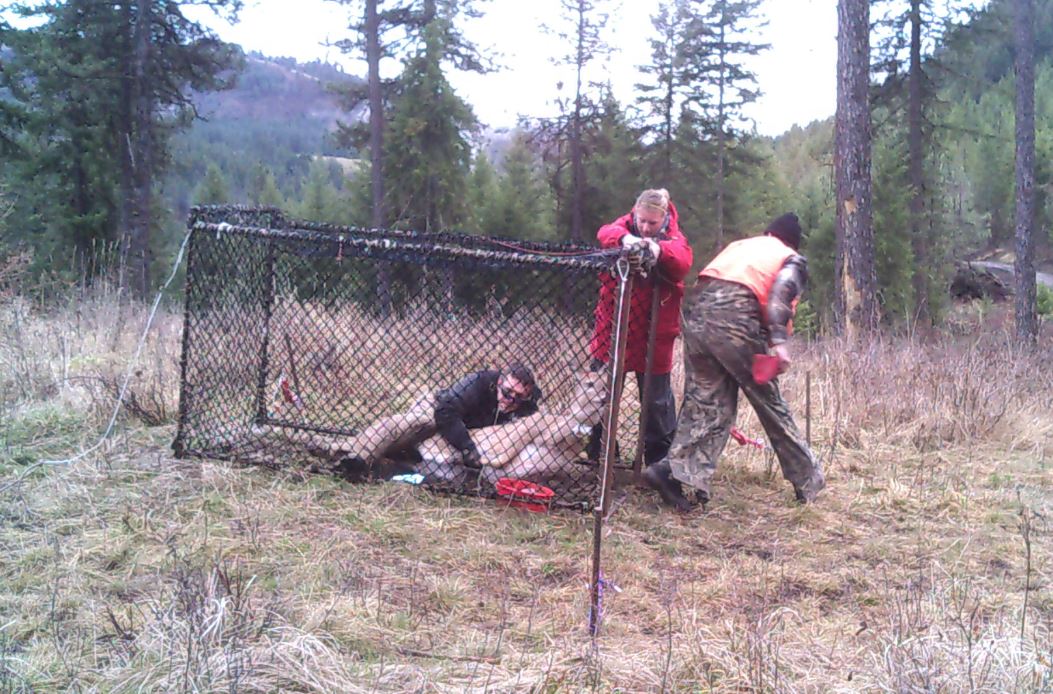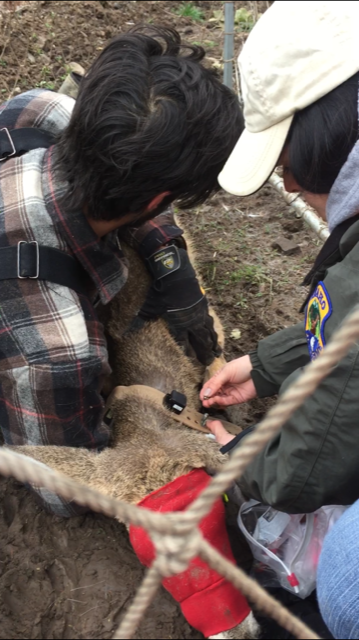White-tailed deer crop depredation rates have increased in the Clearwater Region of northern Idaho the past few years. In the past, multiple deterrent methods targeted at reducing wildlife damage have been tested, including propane exploders, fencing, and lethal removal. Although these deterrents are all feasible, researchers are searching for new, innovative ideas that have high potential of reducing habituation.
To meet this need, a graduate project aims to develop management tools that will reduce agricultural crop damage through behavior modifications designed to reduce whitetail use of agricultural fields. Our two study sites are located within Latah County, just east of Moscow (Figure 1).
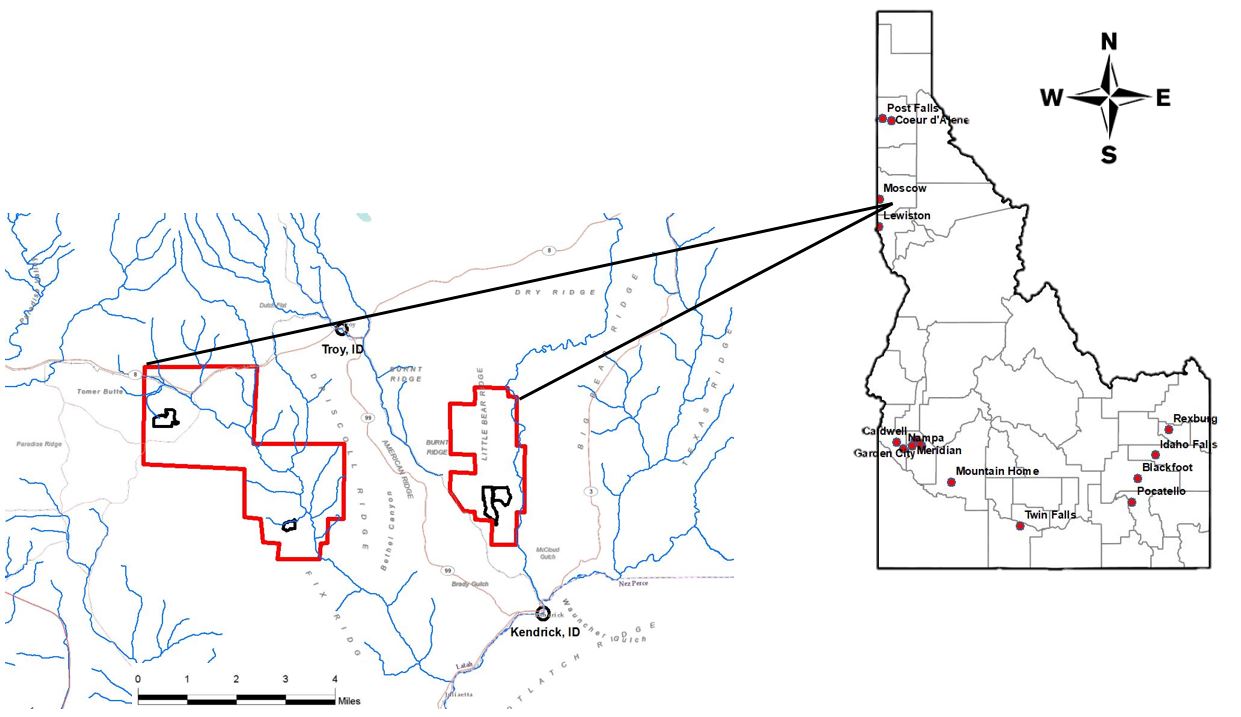
Both sites are on private land, and currently approximately 75 landowners and crop producers allow the capture, observation, and test deterrents on whitetails. Researchers currently have close to 40 female GPS-collared whitetails that were captured via helicopter net gunning and spring clover trapping. The GPS collars provide us with GPS location points every 15 minutes throughout the crop growing season.
Researchers developed a method that separates location data into three types of behaviors: foraging, bedding, and transit. This method allows us to identify individual preferred foraging patches that are located within a depredated agricultural field. The deterrent systems were deployed on four crop fields at weekly intervals, alternating between treatment and no-treatment periods beginning in August and ending in October. The deterrent system consisted of three components (Figure 2).
- Signal-jamming (i.e., a white-noise machine to remove the ability to hear predators or warning signals of other deer)
- False visual signaling (i.e., a white flapping flag to imitate the warning sign of an erect deer tail)
- False scent signaling (i.e., an automated scent pump that expelled mountain lion urine at regular intervals)
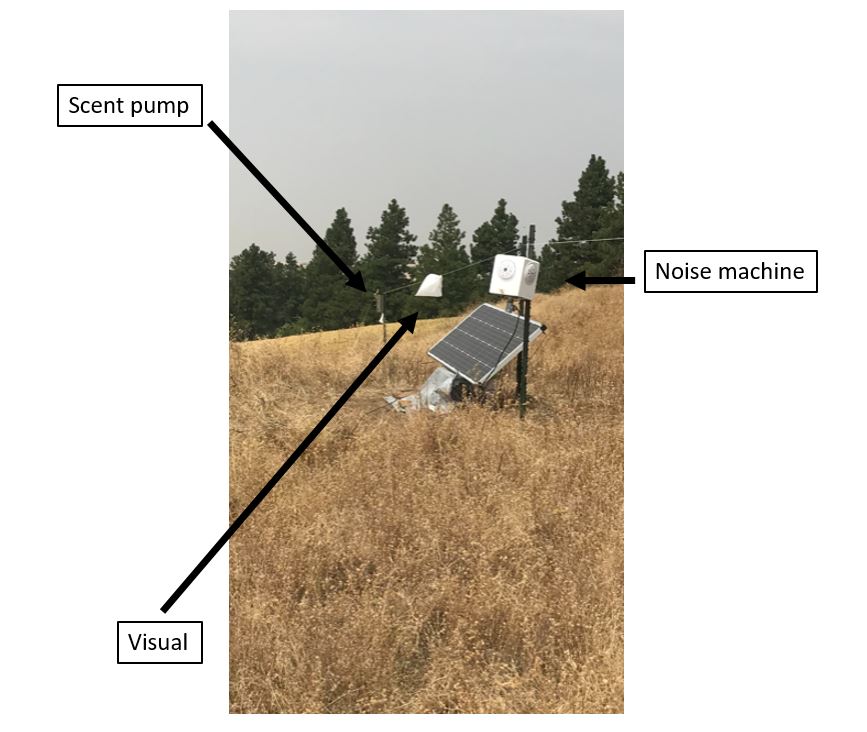
Researchers are currently analyzing the deterrent system by quantifying how effective it is in reducing the amount of time the GPS-collared deer spent foraging within a treated crop field. This will be done by comparing deer movements and space use between pre- and post-treatment periods. Researchers also plan to deploy two other types of deterrent systems in the coming 2019 field season including a lithium chloride foul tasting tablet and a physical barrier using partial electric fencing.

